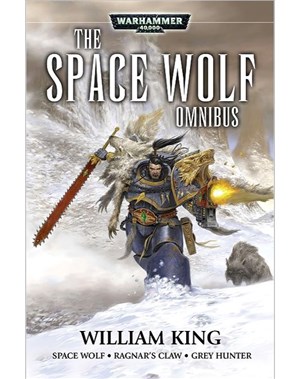
So, how are the books, and how do the help define the FR in 4E? Both were good, and in different ways. Cordell's Plague of Spells, the earlier set of the two titles, does perhaps the best job of explaining the Spell Plague of any of the texts I've read so far about 4th edition. He makes the experience of the (massively magically overpowered) world coming to an end and a new less pleasant world taking over seem real. Additionally, he does a great job making the characters more three dimensional than many other genre fiction titles, making Raidon's loss of a child something that sticks with the reader, Anusha's coming of age reminiscent for many of us, and Japheth's drug addiction a little more realistic than many books of its ilk might want to address. From both a game mechanics perspective and a literary perspective the apocalyptic removal of magical power from many of the Forgotten Realms' prominent figures helps address a problem this setting had suffered
under for over a decade - if there's a world full of massively overpowered beings, why would any other heroes be needed? (I know, but who will watch the watchmen?) Taking the power players down a peg helps give the other figures (player characters in the game, new characters in the books) take shape. The thing that I think Cordell did rather well within his book was keeping a few touch points from the earlier setting to help bridge the gap between "the old world" and the new era. Amongst these were characters from his book Stardeep, about a dungeon within the realms, and also cities and gods from the older campaign. Japheth as a young monk from Candlekeep before the fall was an interesting twist. (What happens to the folks who have spent their lives cataloging magic and knowledge when the world of magic shatters? Well, some would lose their way...)

Swordmage was a different animal. Set much further after the end of the spellplague, it was less concerned with how we got here, and much more about where we are now. There are still touchpoints back to the older setting - info about gods' names that had changed, cities that had been 3rd rate to Waterdeep are now larger players, the Elven kingdom of Myth Drannor has become whole again - but there are also some wholly new elements, like embedded pieces of the planet's lost sister world Abeir. The investigative plot line of SwordMage is fairly reminiscient of many of the stories associated with the Eberron campaign and literary setting. Eberron, the campaign world created by game designer Keith Baker, is a world of pulp mystery - think Chinatown with orc thugs and protagonists that are loners who reluctantly investigate murders. Geran, the main character in Swordmage, is a child of privilege who of course leaves all of that behind to travel the world. In his travels, he becomes entangled in scandal in the Elvish land of Myth Drannor, and after wandering for a while as an adventurer comes home to Hulburg, the kingdom ruled by his elderly uncle. Yes, this is the set up for every Princess Bride-esque tale to be told with Dungeons and Dragons as the mechanics for the telling, but Richard Baker does some clever things to not just tell the story, but make the reader interested in the new campaign world that the game is set in. It's no coincidence that the Forgotten Realms Campaign Setting opens with descriptions of the Moonsea area, where this novel is set, I'm sure. It also leaves enough plot hooks and introduces enough characters (NPCs in game parlance, for the uninitiated) to make for enough tales told around the game table using this novel as source material, much like many 1st edition gamers leveraged the Moonshae Isles books by Douglas Niles to start the first games based in the Forgotten Realms, more than 20 years ago. (Yes, I was one, sitting in my parents' living room after Christmas, and opening the gray box of the first FR Campaign Setting, and rolling up stats for NPCs while listening to Queen, with either the Niles books and the first R.A. Salvatore books, well dog eared by that point, within reach.)
The books are both worth reading, if you liked the FR books of years past or if you're planning on playing in or running a FR game that uses the 4th Edition setting. Cordell's book does a nice job of bridging the gap (I understand one of Salvatore's latest does a similar job), and Baker's Swordmage helps define one of the campaign areas that many players will rediscover this world through - the Moonsea. Both do the genre fiction world justice, and are better than other similar releases in other series. Most importantly, they keep a campaign world that had been stagnating a bit in recent history viable, and take it in new directions. I'll see you in the Realms.

No comments:
Post a Comment